#stonewall50
Text
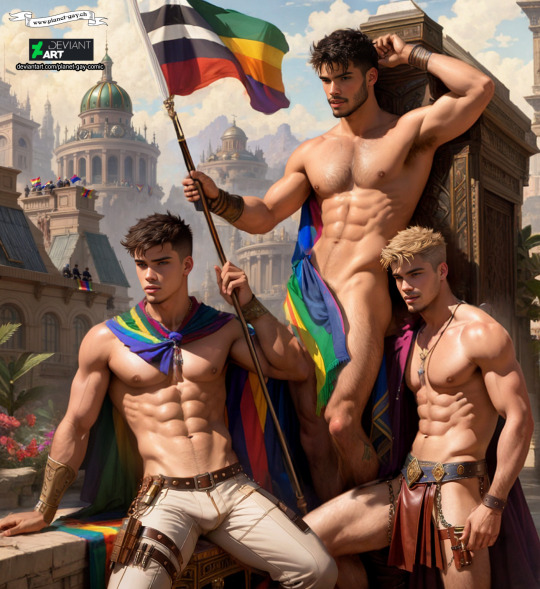
CSD 2023
The annual CSD (Christopher Street Day) Pride Month in June is a celebration of the LGBTQ+ community and a significant milestone in the history of the LGBTQ+ movement. The origins of Pride Month can be traced back to the events of the Stonewall uprising, which took place in June 1969 on Christopher Street in New York City.
The Stonewall uprising began as a response to repeated police raids on the Stonewall Inn, a popular gay and transgender bar. On that fateful night, the bar's patrons fought back against police harassment and discrimination, marking a turning point in the LGBTQ+ movement and serving as a catalyst for the modern fight for LGBTQ+ rights.
One year after the Stonewall uprising, the first Christopher Street Liberation Day Parade was held in New York City, which is considered a precursor to the CSD Pride Month. In the following years, similar parades and events were organized in various cities across the United States and around the world. These parades became a symbol of pride, visibility, and solidarity within the LGBTQ+ community.
Over time, the CSD Pride Month has evolved into a comprehensive program featuring various events such as parades, demonstrations, concerts, film festivals, exhibitions, and lectures. Its aims are to promote LGBTQ+ rights, combat discrimination, and celebrate the diversity of sexual orientation and gender identity.
The month of June holds symbolic significance as it commemorates the Stonewall uprising and celebrates the progress made in LGBTQ+ rights since then. It serves as a time for reflection, remembrance, and commitment to building a more inclusive and just society for all gender identities and sexual orientations.
Today, the CSD Pride Month is celebrated in many countries worldwide and has garnered broad support from LGBTQ+ organizations, associations, businesses, and individuals. It provides an opportunity to stand up for equality and acceptance and to support the LGBTQ+ community.
#PrideMonth#LGBTQ+#LoveIsLove#Equality#PrideParade#PrideFlags#CelebrateDiversity#Stonewall50#LGBTQRights#PrideFestival#queer#gayart#gayboy
365 notes
·
View notes
Photo
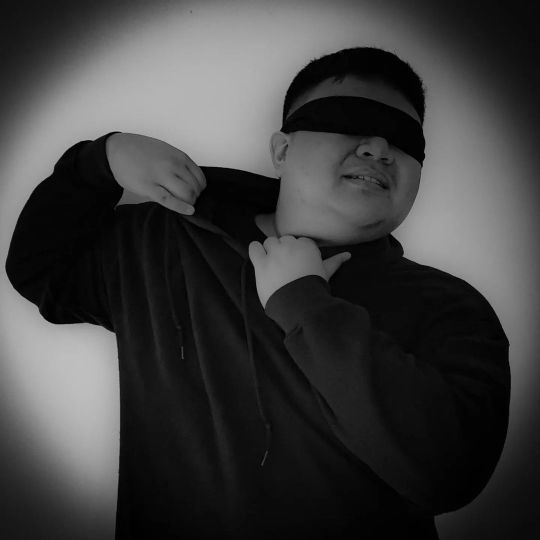
#PRIDEPhotoChallenge2022 (5/9) No color this week. A lot of people still think we celebrate PRIDE colorfully but that wasn't thr case at all at first. A lot of people suffered. Hiding who they truly were to appease their own families and societies. We fight and celebrate for those who fought for our rights and this movement today. We fight for those who are still afraid, those who do not have voices. We celebrate PRIDE because there is still a lot of fight left in the world. All those who had to go through conversion, physical abuse, emotional abuse, and even as far as killed. We do this for them. If you have anyone part of the LGBTQIA+ Community close to you, please tell them how much you love them and how much they mean to you... #pridemonth #pride2022 #gay #gayman #rainbow #gayboy #gaymen #gaypride #wellnessjourney #wellness #queer #queerculture #lgbt #lgbtq #lgbtpride #healing #prosperity #stonewall #stonewall50 #stonewallriots #darkhistory #lgbthistory #blackandwhitephotography #blackandwhite https://www.instagram.com/p/CebBv50PSy3/?igshid=NGJjMDIxMWI=
#pridephotochallenge2022#pridemonth#pride2022#gay#gayman#rainbow#gayboy#gaymen#gaypride#wellnessjourney#wellness#queer#queerculture#lgbt#lgbtq#lgbtpride#healing#prosperity#stonewall#stonewall50#stonewallriots#darkhistory#lgbthistory#blackandwhitephotography#blackandwhite
0 notes
Photo

About Pride Month Lesbian, Gay, Bisexual, Transgender and Queer (LGBTQ) Pride Month is currently celebrated each year in the month of June to honor the 1969 Stonewall Uprising in Manhattan. The Stonewall Uprising was a tipping point for the Gay Liberation Movement in the United States. In the United States the last Sunday in June was initially celebrated as "Gay Pride Day," but the actual day was flexible. In major cities across the nation the "day" soon grew to encompass a month-long series of events. Today, celebrations include pride parades, picnics, parties, workshops, symposia and concerts, and LGBTQ Pride Month events attract millions of participants around the world. Memorials are held during this month for those members of the community who have been lost to hate crimes or HIV/AIDS. The purpose of the commemorative month is to recognize the impact that lesbian, gay, bisexual and transgender individuals have had on history locally, nationally, and internationally. Ricky Gonzalez 22 #pridemonth #queerpride #trigender #phillypride #stonewall50 #lgbtplus #gaypride2019 #livelokai #loveislove #lgbtbrasil #intersex #asexual #transmemes #lgbtaccount #pangender #comingout #happypride #gayisokay #queermemes #lgbtequality #lgbtedit #lgbtqiaplus #lgbtlove #lgbt💛💙💙🏳️🌈🇨🇴💗 #lgtb #pridemonth2018 #pridemonthedit #pridemonth🌈 #pridemonthart (at Weston, Florida) https://www.instagram.com/p/CeY_c0irjW_/?igshid=NGJjMDIxMWI=
#pridemonth#queerpride#trigender#phillypride#stonewall50#lgbtplus#gaypride2019#livelokai#loveislove#lgbtbrasil#intersex#asexual#transmemes#lgbtaccount#pangender#comingout#happypride#gayisokay#queermemes#lgbtequality#lgbtedit#lgbtqiaplus#lgbtlove#lgbt💛💙💙🏳️🌈🇨🇴💗#lgtb#pridemonth2018#pridemonthedit#pridemonth🌈#pridemonthart
1 note
·
View note
Text
In 1984, when Burks was 25 and a young mother living in Arkansas, she would often visit a hospital to care for a friend who had cancer. During one visit, she noticed the nurses would draw straws, afraid to go into one room, its door sealed by a big red bag. She asked why and the nurses told her the patient had Gay-Related Immune Deficiency (GRID), later known as AIDS. On a repeat visit, and seeing the big red bag on the door, Burks decided to disregard the warnings and sneaked into the room. In the bed was a skeletal young man, who told her he wanted to see his mother before he died. She left the room and told the nurses, who said, "Honey, his mother’s not coming. He’s been here six weeks. Nobody’s coming”. Burks called his mother anyway, who refused to come visit her son, who she described as a "sinner" and already dead to her, and that she wouldn't even claim his body when he died. “I went back in his room and when I walked in, he said, "Oh, momma. I knew you’d come", and then he lifted his hand. And what was I going to do? So I took his hand. I said, "I’m here, honey. I’m here”, Burks later recounted. She pulled a chair to his bedside, talked to him, and held his hand until he died 13 hours later. After finally finding a funeral home that would his body, and paying for the cremation out of her own savings, Burks buried his ashes on her family's large plot in Files Cemetery.
After this first encounter, Burks cared for other patients who needed her help. She would take them to appointments, obtain medications, apply for assistance, and even kept supplies of AIDS medications on hand, as some pharmacies would not carry them. Burks work soon became well known in the city and she received financial assistance from gay bars, "They would twirl up a drag show on Saturday night and here'd come the money... That's how we'd buy medicine, that's how we'd pay rent. If it hadn't been for the drag queens, I don't know what we would have done", she said.
Over the next 30 years (with assistance from her daughter) Burks cared for over 1,000 people and buried more than 40 on her family's plot (most of whom were gay men whose families would not claim their ashes). For this, she has been nicknamed the 'Cemetery Angel'.
“Someday, I’d love to get a monument that says: This is what happened. In 1984, it started. They just kept coming and coming. And they knew they would be remembered, loved, and taken care of, and that someone would say a kind word over them when they died” - Ruth Coker Burks

My mother visited UAMS AIDS patients against orders to not enter the room. She learned everything she could about AIDS and she became a lay minister for the terminally ill. My mom was such a beautiful soul.
🏳️🌈 #30GaysOfPride #Stonewall50 #WherePrideBegan 🏳️🌈
66 notes
·
View notes
Text

2 notes
·
View notes
Text

https://www.instagram.com/p/Cel7vLCFc2n/?igshid=YmMyMTA2M2Y=
UHFI 1 - PINK AND BLACK
digital archival print - photograph
#selfieimperfectduanepaul
#pridemonth #portraitphotography #pride #stonewall50 #proud #culture_la @culture_la
There was a time one could be arrested for
“upper-head female impersonation.” - Sylvia Rivera/NYC. #UHFI-DUANEPAUL #sylviarivera #stonewall50
#selfieimperfectduanepaul #duanepaulart #art #duanepaulart # #duanepaul #duanepaulart #duanepaulstuduo #duanepaulphotography #artistsoninstagram @duanepaul #brownskin #losangelesartists #blackmen #blackqueermagic #selfieimperfectduanepaul #blackqueerartist
#duanepaul#selfieimperfectduanepaul#duanepaulart#contemporaryart#duanepaulphotography#duanepaulstuduo#sculpture#gayblackart#losangelesart#art#brown skin#blackartist#blackqueerartist blackmen duanepaul#dupaulart#duane paul#duanepaulsculpture#afrocaribbean#black men#wearablesculpture#queerartist
1 note
·
View note
Text
Ok so Dallas, Texas now has a Trans Pride Mural dedicated to Marsha P. Johnson and Sylvia Rivera and I'm living for it
Artist 🎨: Brian Kenny



Bonus: Daytime pics


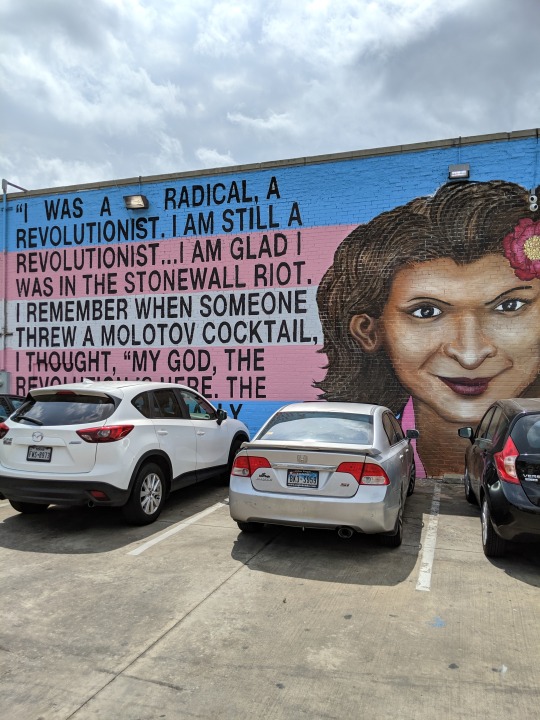

#stonewall#stonewall50#stonewall 50#marsha p johnson#pay it no mind#rest in power#sylvia rivera#trans#trans community#transgender#trans pride#Texas#gay#gay pride#art#mural#muralart#Dallas#education#storme delarverie
116K notes
·
View notes
Photo

🏳️🌈As this year’s #PrideMonth comes to an end, we take another look at #FelixGonzalezTorres "Untitled", 1989, on the year it was first presented, which marked the 20th anniversary of the #Stonewall Riots. In 2019 we installed the work in its original location to coincide with #Stonewall50. The late artist described the work as, “a visual reference, an architectural sign of being, a monument for a community that has been ‘historically invisible’.” image: Felix Gonzalez-Torres "Untitled", 1989 Installation view of "Untitled" (Billboard). Sheridan Square, New York, NY. Mar - Sep. 1989. Organized by Public Art Fund. Photo courtesy of Public Art Fund, NY © Felix Gonzalez-Torres. Courtesy of The Felix Gonzalez-Torres Foundation @felixgonzaleztorres.foundation (at Sheridan Square, New York City) https://www.instagram.com/p/CQv63Prl4Qm/?utm_medium=tumblr
13 notes
·
View notes
Photo

On the Transgender Day of Remembrance, we highlight two artists from the exhibition Nobody Promised You Tomorrow, now in its final month.
Exploring the in/visibility and intersectionality of queer Brown and Black experience, David Antonio Cruz’s serieswegivesomuchandgivenothingatall pay homage to trans women of color who were murdered in 2017–18. Runlittlewhitegirl, portrait of the girls (2018) is a portrait representing all the many who are misidentified, misgendered, disappeared, or not reported. Cruz’s visual vocabulary, with the impressionistic rendering of skin tones and the formal composition reminiscent of art history’s Three Graces retrieves the beauty and individuality of his subjects while imbuing a sense of divinity. Runlittlewhitegirl, portrait of the girls calls attention to the flagrant injustice and violence faced by trans community, especially trans women of color, highlighting an urgent need for change.
Linda LaBeija’s song Urgency, exhibited next to Cruz’s portraits, is both a reflection on loss and a powerful call to action for the safety and well-being of trans women, and fuses poetry, hip-hop, and house music. Listen to Linda LaBeija’s song Urgency on her Soundcloud page, or at the exhibition, and see David Antonio Cruz’s enduring portraits.
Posted Yiran Chi
Image: David Antonio Cruz (American, born 1974). runlittlewhitegirl, portrait of the girls, 2016/2017. Oil and enamel on birch panel. Courtesy of the artist. © David Antonio Cruz. (Photo: Anthony Alvarez)
#trans day of remembrance#nobodypromisedyoutomorrow#stonewall50#brooklyn museum#trans#tdor#David Antonio Cruz#say her name#gender#queerness#race#queer#lgbtq#trans women of color#violence#trans community#humanity#homage#portraiture#painting#art#lgbtq+ artists#brooklyn#linda labeija#urgency#civil rights movement#police brutality
527 notes
·
View notes
Photo

No pride in a police state! 🏳️🌈
No pride in mass incarceration.
No pride in ICE and deportations.
No pride in rainbow capitalism.
No pride in US imperialism.
Stonewall was an anti-police riot led by Black and brown trans women, butches, street kids, and sex workers. We won't forget Pride's radical roots.
Photo: Heritage of Pride Parade, New York City, June 25, 2017. © Ryan McGinley via @lgbt_history
#lgbt#lgbtq#stonewall#stonewall50#pride#sylvia rivera#marsha p johnson#storme delarverie#asian american#miss major#queer#trans
1K notes
·
View notes
Text
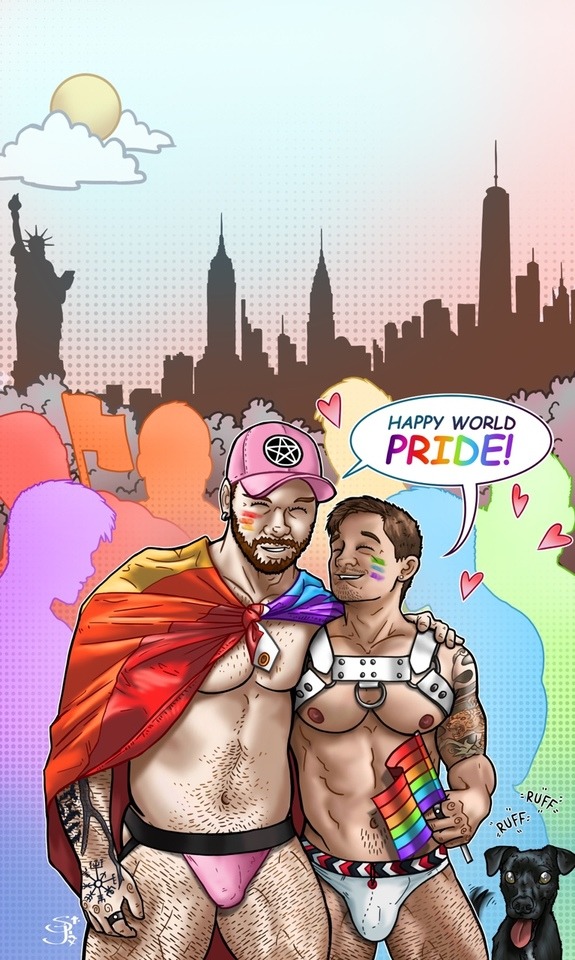
Happy Pride from My lil Tiger and I 🥰🥰
#gay#muscle#stjinx#gay art#gay men#gayart#gay comic#gay comic art#gaycomic#gaycomicart#boyfriends#boyfriend#pride month#pride#world pride#pride 2019#nyc pride#stonewall50
610 notes
·
View notes
Photo
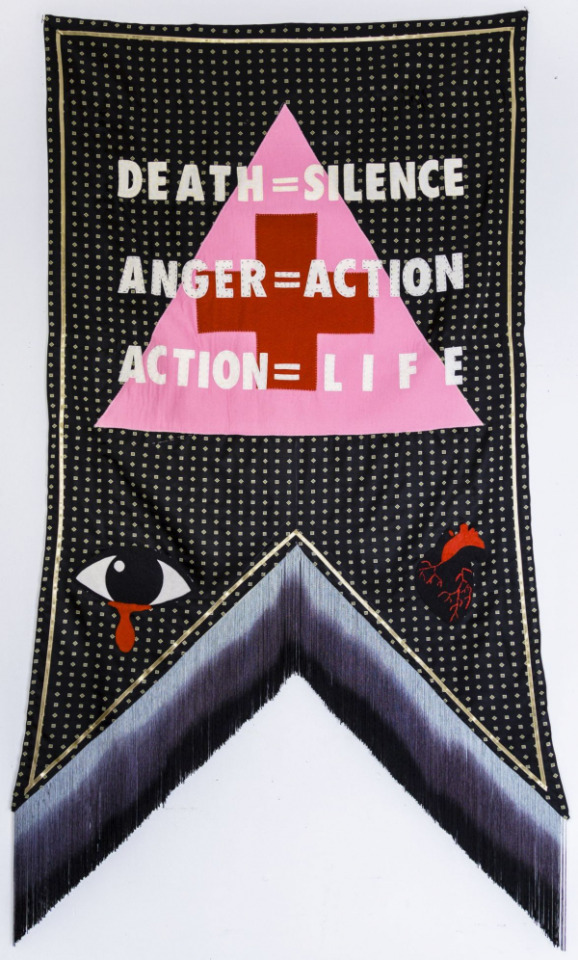
Elektra KB (Colombian artist). Protest Sign II, 2017. Textile, felt, thread
Nobody Promised You Tomorrow: Art 50 Years After Stonewall commemorates the fiftieth anniversary of the 1969 Stonewall Uprising—a six-day clash between police and civilians ignited by a routine raid on the Stonewall Inn, a gay bar in New York City—and explores its profound legacy within contemporary art and visual culture today. The exhibition draws its title from the rallying words of transgender artist and activist Marsha P. Johnson, underscoring both the precariousness and the vitality of LGBTQ+ communities.
51 notes
·
View notes
Photo

How Many Rainbow Logos Does It Take to Gain Human Rights?
Happy 50th Stonewall !
#human rights#gay pride#pride#corporatism#lgbt#lgbqti#queer#queer pride#2019#hooty hoo#rainbow#rainbow pride#gay#lesbian#bisexual#trans#politics#era#equality#equity#stonewall#stonewall riot#stonewall50#1969#60s#capitalism#socialism#socialist
426 notes
·
View notes
Photo

About Pride Month Lesbian, Gay, Bisexual, Transgender and Queer (LGBTQ) Pride Month is currently celebrated each year in the month of June to honor the 1969 Stonewall Uprising in Manhattan. The Stonewall Uprising was a tipping point for the Gay Liberation Movement in the United States. In the United States the last Sunday in June was initially celebrated as "Gay Pride Day," but the actual day was flexible. In major cities across the nation the "day" soon grew to encompass a month-long series of events. Today, celebrations include pride parades, picnics, parties, workshops, symposia and concerts, and LGBTQ Pride Month events attract millions of participants around the world. Memorials are held during this month for those members of the community who have been lost to hate crimes or HIV/AIDS. The purpose of the commemorative month is to recognize the impact that lesbian, gay, bisexual and transgender individuals have had on history locally, nationally, and internationally. Ricky Gonzalez 22 #pridemonth #queerpride #trigender #phillypride #stonewall50 #lgbtplus #gaypride2019 #livelokai #loveislove #lgbtbrasil #intersex #asexual #transmemes #lgbtaccount #pangender #comingout #happypride #gayisokay #queermemes #lgbtequality #lgbtedit #lgbtqiaplus #lgbtlove #lgbt💛💙💙🏳️🌈🇨🇴💗 #lgtb #pridemonth2018 #pridemonthedit #pridemonth🌈 #pridemonthart (at Miami Beach, Florida) https://www.instagram.com/p/CeY-1RUrWW_/?igshid=NGJjMDIxMWI=
#pridemonth#queerpride#trigender#phillypride#stonewall50#lgbtplus#gaypride2019#livelokai#loveislove#lgbtbrasil#intersex#asexual#transmemes#lgbtaccount#pangender#comingout#happypride#gayisokay#queermemes#lgbtequality#lgbtedit#lgbtqiaplus#lgbtlove#lgbt💛💙💙🏳️🌈🇨🇴💗#lgtb#pridemonth2018#pridemonthedit#pridemonth🌈#pridemonthart
0 notes
Photo

A picture is worth a thousand words
[Screenshot of article on Out.com. The essay “Op-ed: 50 Years Later, Pride Month Is a Disgrace to Our Ancestors” is overwhelmed on the page by banner ads for Coke (Coca Cola), shown in rainbow cans for pride month.]
https://www.out.com/pride/2019/5/31/50-years-later-pride-month-disgrace-our-ancestors
#QueerLiberationNotRainbowCapitalism
#stonewall50#the first pride was a riot#lgbt#lgbtq#lgbtqia+#lgbt equality#lgbt rights#lgbtq equality#lgbtq rights#stonewall#stonewall riots#stonewall riot#QueerLiberationNotRainbowCapitalism
325 notes
·
View notes
Text
Stormé DeLarverie: the forgotten heroine of the Stonewall Riots
by Deirdre Swain
During Cork Pride Festival in August 2019, the Cork City Libraries’ Stonewall Riots exhibition was displayed in the city. This exhibition commemorates the 50th anniversary of a significant LGBT uprising in New York. I would like to introduce one of the main protagonists of this momentous event in LGBT history. When the Stonewall Riots of June 1969 and the struggle for LGBT rights are mentioned and celebrated, figures such as Craig Rodwell and Frank Kameny are regarded as two of the principal people involved in bringing about a positive change for the LGBT community. However, the most important person in this event has essentially been forgotten and erased from LGBT history. Her name is Stormé DeLarverie.

So who was this important champion of LGBT rights? Stormé DeLarverie was born in Louisiana in 1920 and grew up in New Orleans. Her mother was an African-American servant in the house of her father, who was Caucasian. Stormé had a tough time growing up biracial in New Orleans. She told the journalist Kirk Klocke in an interview that she still had scars from when bullies hung her by the leg from a fence post. Her brother had to free her from the fence, and she wore a brace for years. She started singing as a teenager in New Orleans dance clubs until she came out as lesbian aged 18. She then moved to Chicago. She stated that the family “had to get me out of New Orleans or I would have been killed”. She does not elaborate on what this meant and whether it was her skin colour or her sexuality, or both, which put her life in danger.
Stormé began her performing career in the 1940s as Stormy Dale, a big band singer. From 1955 to 1969, she worked as drag king and M.C. of the Jewel Box Revue, a drag/female impersonator touring company, and the first racially integrated drag show in the USA. This company was advertised as “Twenty-five Men and a Girl”, and the solo “girl” of the show was Stormé DeLarverie! She dressed in male attire in her performances, while her male colleagues masqueraded as women. She was often mistaken for a man. However, this did not matter to her – she declared that “Some say sir and some say ma’am….It makes no difference to me”. A dancer named Diana, who died not long after the Stonewall Riots, was the love of her life.
It was one woman’s struggle with the police that ignited the Stonewall Riots. Accounts of the Stonewall Riots describe how “a butch lesbian in men’s clothing” was arrested for not wearing the three pieces of clothing correct for her gender, and she was brought out to the police van during the raid. She complained to the police, either because they were rough with her or because her handcuffs were too tight (reports differ on this). She fought the police and attempted to go back into the Stonewall Inn several times, whereupon an officer picked her up and threw her into the police van. Her head was bleeding from having been hit with a billy club by the police. As she was pushed into the van, she urged men watching her ordeal to help her, asking, “Why don’t you guys do something?” It was then that the tension of that night (28 June 1969) and of lifetimes of abuse erupted. Gay and lesbian people felt that the police were being unnecessarily brutal, and they reacted in fury.
The identity of the woman who triggered this important event in LGBT history is disputed, but many reports declare that it was Stormé DeLarverie. As all the accounts differ, the truth cannot be confirmed, however, my research points clearly towards the fact that it was Stormé Delarverie and the fact that her involvement in this momentous event in LGBT history has been unfairly erased. David Carter states in his book, Stonewall: the riots that sparked the gay revolution, that Charles Kaiser, author of The Gay Metropolis, 1940-1996, asserts that it was in fact Stormé DeLarverie who started the riots. However, David Carter disagrees with this, adding that all the witnesses he interviewed for his research describe the woman in question as Caucasian, and Stormé was African-American. However, in certain photos, Stormé does not look particularly African-American; she had, after all, only one African-American parent.

Stormé in later years
Penny Coleman’s book, Village Elders describes Stormé as “a black woman with a white face”. This contradicts David Carter’s claim that it could not have been Stormé who initiated the Stonewall Riots, because she might actually have looked Caucasian. Ann Bausum describes the woman’s scuffle with police in her book, Stonewall: breaking out in the fight for gay rights, giving a similar account to that of David Carter, but she does not mention the name of the woman who changed the course of history by reacting against the injustices she was experiencing. Stormé herself confirmed that it was she who threw the first punch at the Stonewall Riots.
Stormé DeLarverie was a campaigner for the LGBT community and for victims of domestic violence throughout her life. She worked as a bouncer at lesbian bars in the latter part of her life. She also appointed herself guardian of lesbians and drag queens in Greenwich Village. She would patrol the streets while legally armed, and would not put up with any form of discrimination, bullying or abuse of any lesbians or drag queens in the village. She saw this as babysitting and referred to the lesbians and drag queens fondly as her “babies”. Being a mixed race androgynous lesbian made Stormé distinctive but also vulnerable. This vulnerability as well as Stormé’s challenges in childhood made her very protective of people in the LGBT community, and she strove to keep this minority group safe. Sadly, Stormé suffered from dementia in later years, and she died following a heart attack in May 2014, aged 93. Her considerable and important contribution to the LGBT rights movement should be acknowledged and held in high regard. Let us honour her and let us not forget her.
View Cork City Libraries’ exhibition, The Stonewall Revolution: 50 years of LGBT liberation
References
Books
Bausum, A. (2015). Stonewall: breaking out in the fight for gay rights. New York: Viking.
Carter, D. (2004). Stonewall: the riots that sparked the gay revolution. New York: St. Martin’s Press.
Coleman, P. (c2000). Village elders. Urbana: University of Illinois Press.
Harbin, B., Marra, K. and Schanke, R., eds. (2007). The gay and lesbian theatrical legacy: a biographical dictionary of major figures in American stage history in the pre-Stonewall era. Ann Arbor: University of Michigan Press.
Lamé, A. (2017). From prejudice to pride: a history of the LGBTQ+ movement. London: Wayland.
Willard, A. (1971). Female impersonation. New York: Regiment Publications.
Online Articles
Chu, G. (s.d.). From the archives: an interview with lesbian Stonewall veteran Stormé DeLarverie. [online] Available at: https://www.afterellen.com/people/77167-an-interview-with-lesbian-stonewall-veteran-storm-delarverie
[Accessed 03 June 2019].
Fernandez, M. (2010). ‘A Stonewall veteran, 89, misses the parade’, The New York Times, 27 June. Available at: https://www.nytimes.com/2010/06/28/nyregion/28storme.html
(Accessed: 03 June 2019).
Heuchan, C. (2018). We need to talk about misogyny and the LGBT community’s erasure of black lesbian history. [online] Available at: https://www.afterellen.com/general-news/561237-we-need-to-talk-about-misogyny-and-the-lgbt-communitys-erasure-of-black-lesbian-history
[Accessed 03 June 2019].
Luce, J. (2010). ‘Gay community’s Rosa Parks faces death, impoverished and alone’, Huffpost, 12 July. Available at:
https://www.huffpost.com/entry/gay-communitys-rosa-parks_b_643746
(Accessed: 03 June 2019).
Montague, A. (2018). Stormé DeLarverie: the lesbian spark in the Stonewall uprising. [online] Available at:
https://socialistaction.org/2018/07/31/storme-delarverie-the-lesbian-spark-in-the-stonewall-uprising/
[Accessed 03 June 2019].
SurfTone, S. (2019). The night I met Stormé DeLarverie, the lesbian who threw the first punch at Stonewall. [online] Available at: https://www.afterellen.com/people/558507-the-night-i-met-storme-delarverie-the-lesbian-who-threw-the-first-punch-at-stonewall
[Accessed 03 June 2019].
West, R. (2013). ‘Stormé DeLarverie: in a storm of indifference, she’s still a jewel’, Huffpost, 26 March. Available at: https://www.huffpost.com/entry/storme-delarverie_b_2909178?guccounter=1&guce_referrer=aHR0cHM6Ly93d3cuZ29vZ2xlLmllLw&guce_referrer_sig=AQAAAM3tT1XtMiKEsIZK3SaCwXDGknAlvQv8tp6yGPZfyyxhRu9UkyX91H-dNh9oLYdiA8xAT7Fn4UdIGsuuJXoJ0Ll5nHJZ6Pq6Nkt69fNfFWjdvG-Sg2bEbnxN527BptUappnAQTlO0FJb9KY1AE31N6G9hrrknr-DIifhIaZzf-Mz
(Accessed: 03 June 2019).
Yardley, W. (2014). ‘Stormé DeLarverie, early leader in the gay rights movement, dies at 93’, The New York Times, 29 May. Available at: https://www.nytimes.com/2014/05/30/nyregion/storme-delarverie-early-leader-in-the-gay-rights-movement-dies-at-93.html
(Accessed: 03 June 2019).
126 notes
·
View notes